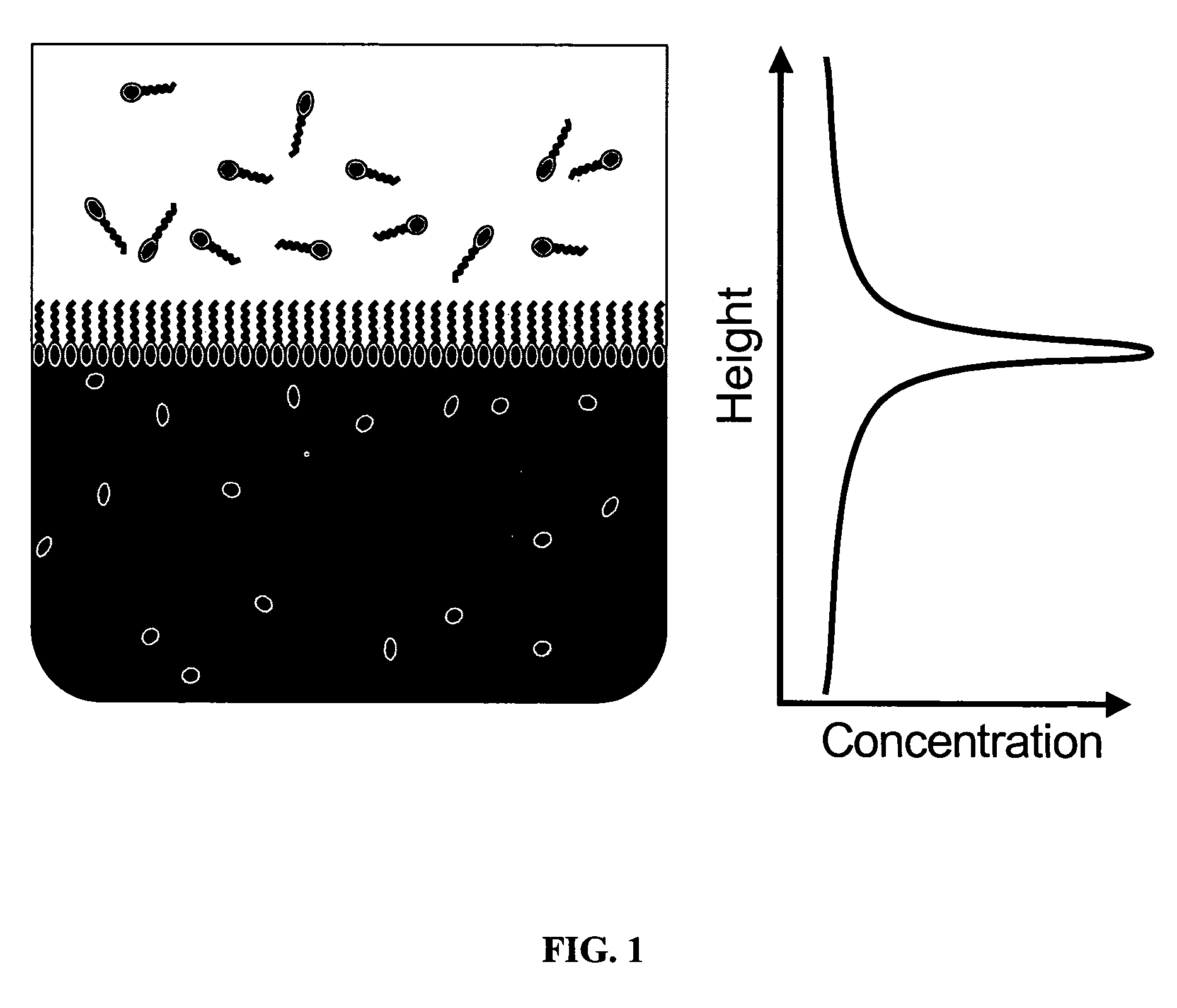Low dosage naphthenate inhibitors
a naphthenate inhibitor, low dosage technology, applied in the direction of other chemical processes, wellbore/well accessories, separation processes, etc., can solve the problems of calcium naphthenate precipitates and/or naphthenate stabilized emulsions, carbon dioxide loss from the solution, crude oil pressure drop, etc., to inhibit interaction and inhibit the formation of organic salts
- Summary
- Abstract
- Description
- Claims
- Application Information
AI Technical Summary
Benefits of technology
Problems solved by technology
Method used
Image
Examples
example 1
[0035]A solution was prepared as a surrogate for connate water by combining 1% calcium chloride and 2.5% sodium chloride in water and adjusting the pH to 8. Another solution was prepared as a surrogate for crude oil by combining 1% naphthenic acid in aliphatic hydrocarbons. 50 ml of each solution was combined and shaken for five minutes. Upon standing, a thick oil-in-water emulsion was observed, apparently stabilized against droplet coalescence by a layer of calcium naphthenate at the interface of each droplet.
example 2
[0036]A connate water surrogate solution and a crude oil surrogate solution were prepared as described in Example 1.50 ml of each solution was combined. However, before shaking, 500 ppm of acetic acid was added to the combination of surrogate solutions. All of the fluids were then shaken together for five minutes. Upon standing, the fluids separated easily with no apparent emulsions or calcium naphthenate solids. The pH was measured at 5.2.
example 3
[0037]A connate water surrogate solution and a crude oil surrogate solution were prepared as described in Example 1.50 ml of each solution was combined. However, before shaking, 40 ppm of a mixture of monophosphate ester and diphosphate ester and 100 ppm of acetic acid were added to the combination of surrogate solutions. All of the fluids were then shaken together for five minutes. Upon standing, the fluids separated easily with no apparent emulsions or calcium naphthenate solids. The pH was measured at 7.0.
PUM
| Property | Measurement | Unit |
|---|---|---|
| molar ratios | aaaaa | aaaaa |
| molar ratios | aaaaa | aaaaa |
| molar ratios | aaaaa | aaaaa |
Abstract
Description
Claims
Application Information
 Login to View More
Login to View More - R&D
- Intellectual Property
- Life Sciences
- Materials
- Tech Scout
- Unparalleled Data Quality
- Higher Quality Content
- 60% Fewer Hallucinations
Browse by: Latest US Patents, China's latest patents, Technical Efficacy Thesaurus, Application Domain, Technology Topic, Popular Technical Reports.
© 2025 PatSnap. All rights reserved.Legal|Privacy policy|Modern Slavery Act Transparency Statement|Sitemap|About US| Contact US: help@patsnap.com

